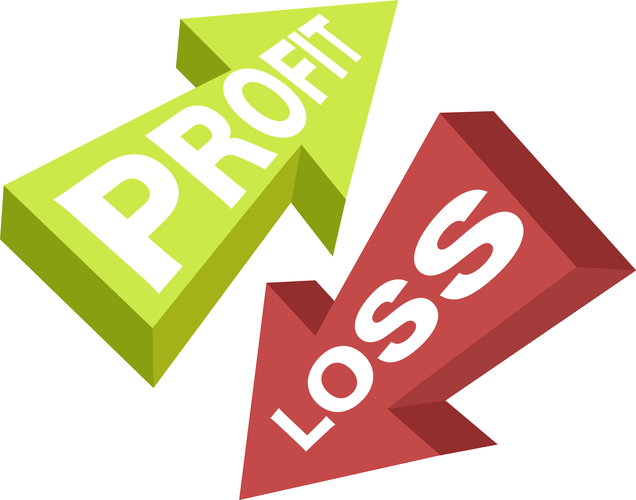
However, it’s important to note that a higher ROE doesn’t always indicate superior performance. It must be evaluated in conjunction with other financial metrics and industry benchmarks. From the example above, we can see that although Company A has a higher ROE, it also has a higher equity multiplier, indicating a higher level of debt financing. Investors should consider both the equity multiplier and ROE when evaluating a company’s financial health and risk. And these assets are typically financed through equity (money from shareholders), debt (loans and borrowings), or a mix of both. Companies with more debt will have higher debt servicing costs—think of those pesky interest payments—which means they need to generate more cash flow to stay afloat.

Significance and Use of Equity Multiplier Formula
- If a company can generate a high ROE, it makes sense to reinvest in the business.
- For example, total assets can be reduced because of this, leading to a skewed metric.
- It is necessary for every investor to take a look at other companies in similar industries and look at different financial ratios.
- Meanwhile, Verizon’s telecommunications business model is similar to utility companies, which have stable, predictable cash flows and typically carry high debt levels.
- The equity multiplier is a mirror reflecting a company’s financial leverage, providing insight into how heavily it depends on debt to finance its operations.
- While this could translate into higher returns on equity due to the impact of financial leverage, it’s a double-edged sword.
A company with strong earnings and efficient asset use can achieve high ROE with appropriate leverage. However, excessive leverage, marked by a high equity multiplier, increases risk and may lead to financial instability during economic downturns. Similarly, in the insurance sector, regulators use the equity multiplier as a tool to assess the financial health https://mydoggiesays.com/bookkeeping-2/hoa-accounting-101-a-thorough-guide-for-board/ and risk levels of an insurance company. Insurance companies with a high equity multiplier might have more financial leverage but at the same time pose a higher risk. Effectively, the equity multiplier characterizes how much of the company’s assets are financed by shareholders’ equity. A high equity multiplier indicates a larger amount of debt, suggesting that the firm has been aggressive in financing its growth with debt.
- It’s a star player in a more comprehensive framework called the DuPont analysis.
- As the cost of debt financing increases, managers may shift to using more equity to fund operations.
- The DuPont model breaks down return on equity (ROE) into three constituents, which include the net profit margin, asset turnover, and equity multiplier.
- Company A has an equity multiplier of 2 ($1,000,000 / $500,000) and a ROE of 20% ($100,000 / $500,000).
- Return on equity (ROE) is a financial performance metric that measures your company’s ability to generate profit from its shareholders’ equity.
- We will see how to apply this formula in the equity multiplier examples, its importance, and its interpretation.
Understanding the Equity Multiplier: A Comprehensive Guide for Financial Analysis
2) To increase the equity multiplier through decreasing equity, a company can buy back shares of stock or issue a special dividend. This will decrease the denominator of the equation, while keeping the numerator (debt) constant. 1) To increase the equity multiplier through increasing debt, a company can take on more debt. This will increase the numerator of the equity multiplier equation, while keeping the denominator (equity) constant.

Why does the equity multiplier matter to SaaS companies?

The equity multiplier is calculated by dividing the value of assets a company owns to its stockholder’s equity. With this equation, you can use the formula for equity multiplier to derive a company’s debt ratio. The higher the asset to equity ratio, the more a company is leveraged through debt. Monitoring changes in Exxon’s equity multiplier over time can indicate shifts in its financing strategy and appetite for leverage. Conservative investors may prefer a lower ratio to limit downside risk exposure. The equity-to-asset ratio equals 53% ($186B/$354B), giving an idea of balance sheet solvency.

Diving into Calculations and Examples

This is because a smaller portion of XYZ Company’s financing comes from debt, which must be repaid with interest. It’s evident that ABC Company is the least appealing of the two companies. High equity multiplier is a high risk indicator since the formula for equity multiplier company is more reliant on debt financing. A high Equity Multiplier entails that the firm isn’t highly leveraged and the ownership is highly diluted. If an equity multiplier is low, it implies that the company is highly leveraged, increasing the investment risk. As an investor, if you look at a company and its multiplier, you would only be able to tell whether the company has been using high or low financial leverage ratios.
- These industries rely more on intellectual property or human capital than physical assets, leading to a preference for equity-heavy capital structures and reduced debt reliance.
- With a long, strong lever (high equity multiplier), you can lift a massive rock (generate huge returns) with minimal effort (a small equity base).
- A mature SaaS company typically demonstrates more stability and a balanced approach to financing.
- Capital-intensive industries, such as utilities or manufacturing, typically have higher equity multipliers due to their reliance on debt to finance large fixed assets.
- Avid investors keep a keen track on the key performance indicators of a company which help them in decision-making.
- Since both total assets and total equity are positive numbers, equity multiplier will always be a positive number.
- As such, the equity multiplier is a key metric to assess both risk and return potential.
- By providing a clear picture of the balance between debt and equity in a company’s capital structure, the equity multiplier assists in evaluating the risk and potential return on investment.
- Understanding these components will allow you to accurately gauge a company’s financial leverage.
- Through the lens of the equity multiplier, you can better comprehend the risks and returns of your investments.
Let’s take a hypothetical example to illustrate the relationship between the equity multiplier and ROE. Company A and Company B both have a net income of $1 million, but their equity multipliers differ significantly. Company A has an equity multiplier of 2, while Company B has an equity multiplier of 4. In conclusion, the equity multiplier is a valuable gym bookkeeping tool for understanding a company’s financial leverage and its impact on ROE. By calculating and analyzing this ratio, investors and analysts can make informed decisions about a company’s risk profile and growth potential. Generally speaking, investors tend to prefer companies with a lower equity multiplier.

